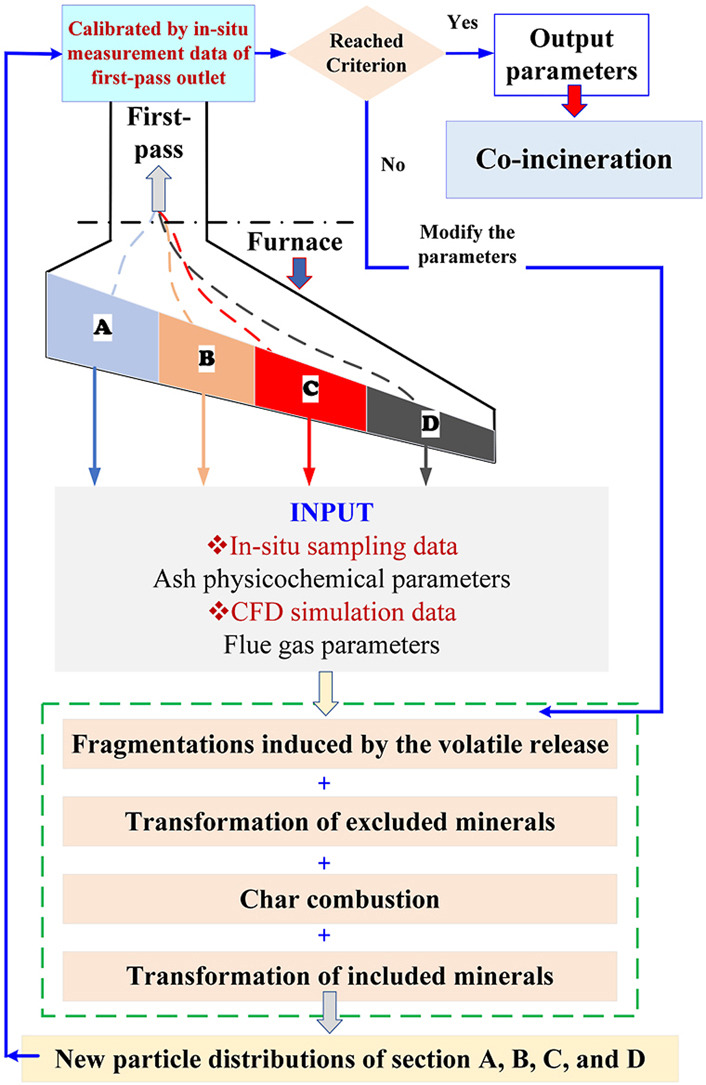• Coarse ash particle evolution process of MSWI is successfully predicted.
• Co-incineration has little effect on the distribution characteristics of fly ash.
• Carbon content of coarse ash particles is sensitive to parameter changes.
• Increased carbon content of ash increases the probability of dioxins formation.
This paper aims to report the evolution characteristics of the coarse ash particles generated from the co-incineration of municipal solid waste with other wastes, e.g. sewage sludge, to suggest suitable operational strategies to handle the side effects. By using an evolution model which addresses the mechanism of char combustion, volatile-induced fragmentation, and the transformation of included and excluded minerals particles, the coarse ash particle evolution process in the waste incinerator is successfully predicted. By comparing with in-situ measurement data of a 200 t/d forward grate MSW incinerator, the predicted total particle concentration is 275.7 mg/Nm3, and the relative difference is about 4.2 %. Although the variation in flue gas parameters has little effect on the distribution characteristics of coarse ash particles from municipal solid waste incineration (MSWI), the carbon content of coarse ash particles is more sensitive to flue parameter change. Due to the tight relationship between the PCDD/Fs and the carbon content of ash particles under the mechanism of the de novo synthesis, the increase in carbon concentration caused by the co-incineration of low-calorific value waste will increase the probability of the PCDD/Fs formation.

